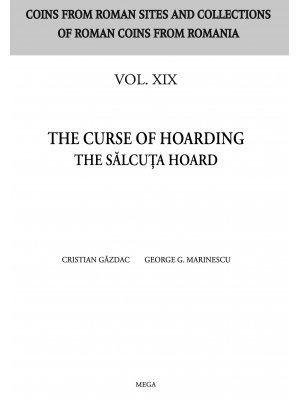Shopping Cart
0 item(s) - 0.00лв
Hoarding for Value. Roman Denarii and their imitations: The Hoard Peștiș I
Cristian Găzdac, Călin Ghemiș. Hoarding for Value. Roman Denarii and their imitations: The Hoard Peștiș I (Coins from Roman sites and collections of Roman coins from Romania, Vol. XVI)
Language: Engish. Category: Roman Provincial Coinage
The village of Peștiș is located in the NW part of Romania (Bihor County), a locality under the administration of Aleșd city. From the relief point of view, the settlement is placed on the southern branch of the Plopiș/Șes Mountains (map 1). The first archaeological remains in the area of Peștiș were noticed in the 1970’s when the palaeontologist Tiberiu Jurcsak pints out the cave “Piatra Jurcoaiei/Piatra Jurcoaii”. Following this information, in 1970, the archaeologist Doina Ignat opened a testing excavation in this cave and demonstrated solid evidence dated in the Middle Neolithic Age. Among the most remarkable finds are: a child grave (aged 6–8 years) with ceramic vessels, a deer bone socket and five bone beads as funerary inventory. This discovery was followed by similar ones from the adjacent area of the Crișul Repede River basin from Șuncuiuș – the cave Unguru Mare, Vadu Crișului- Peștera Devenț II, the cave Subpiatră from Aștileu.
Table of contents
LIST OF ILLUSTRATIONS
ACKNOWLEDGMENTS
THE LOCATION AND THE ARCHAEOLOGICAL STATE OF RESEARCH
THE HOARD. THE CIRCUMSTANCES OF DISCOVERY
The container
The hoard structure
Comments
The imitations
The mints
Conclusions
REFERENCES
TABLE
GRAPHS
MAPS
CATALOGUE
| Details | |
| Publisher | Editura Mega |
| Language | English |
| Pages | 238 |
| Illustrations | b/w figures, maps |
| Binding | paperback |
| ISBN | 978-606-020-599-9 |
| Creation date | 2023 |
| Size | 21 x 29 cm |
Write a review
Your Name:Your Review: Note: HTML is not translated!
Rating: Bad Good
Enter the code in the box below:















